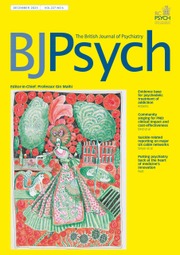When women's roles in the war effort brought their empowerment, from The Flame Within (1936) to Lady in the Dark (1944), the institution of movie psychiatry reminded women of their place – as passive recipients of male wisdom and treatments. The female movie psychiatrist (The Flame Within) is frequently no different from the successful but unhappy career woman (Lady in the Dark) – their career will never bring the same fulfilment as a solid marriage. The female movie psychiatrist must be ‘cured’ by her love for her male patient. Dr Constance Peterson (Ingrid Bergman) has no difficulties helping her male amnesic patient, accused of murder, escape confinement. She marries him at the denouement of Spellbound (1945). Rather than list over a hundred films where girl (psychiatrist) falls for boy (patient), the challenge is to name those that deviate from this storyline. Classic Hollywood depicted women therapists as inadequate, personally and professionally: Knock on Wood (1954), A Perfect Furlough (1958), Wild in the Country (1961), A Very Special Favour (1965) and A Fine Madness (1966). Similar unhappy archetypes continue to yearn for their male patients in modern films: Mr Jones (1993), 12 Monkeys (1995) and The Jacket (2005). Perfect psychiatrist Dr Lowenstein must be rescued from her miserable personal life by an affair with her patient's brother in Prince of Tides (1991). In all these films, the only effective treatment is love. The audience are encouraged not to dwell on the boundary violations.
Male movie psychiatrists have romantic liaisons less frequently when taking into account the proportion of films where they are represented, but their behaviours are no less ludicrous: What's New Pussycat? (1965), Beyond Therapy (1987) and Color of Night (1994). Freud's provocative quote may help explain why male psychiatrists break fewer boundaries on the silver screen: ‘for women, the level of what is ethically normal is different from what it is in men’ – making the films here quoted truly Freudian.



eLetters
No eLetters have been published for this article.